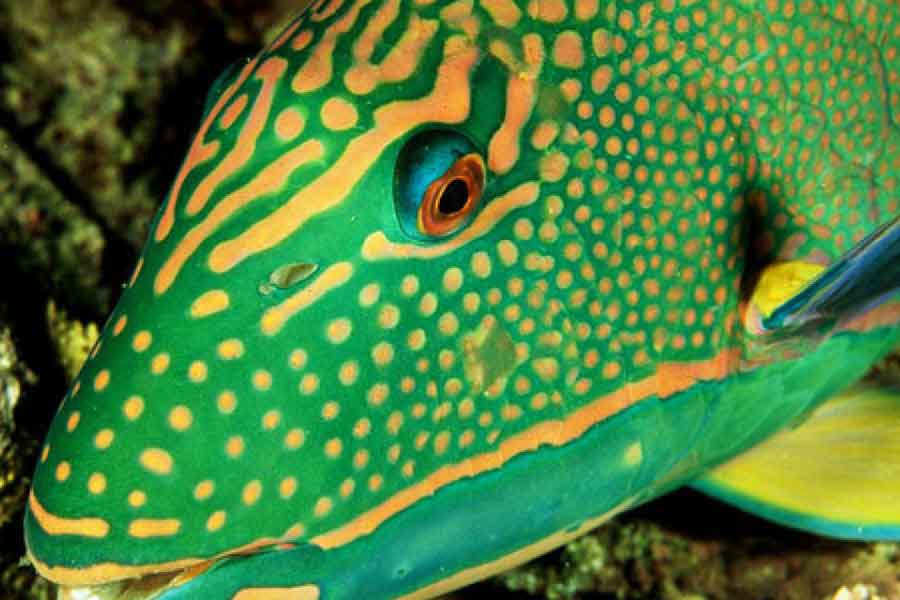
Normally, during the day, reef fish are very active and constantly on the lookout to avoid being surprised by a predator. However, problems arise with the fall of the sun, as that is the time of highest activity for nocturnal hunters such as moray eels, octopuses, large crabs, and others.
To seek rest, fish position themselves among the corals or in crevices of rocks. Sometimes their sleep is so deep that a diver could hold them in their hand without them waking up, which obviously makes them very vulnerable to attacks.
The parrotfish, named for its strong beak-shaped teeth used to gnaw on coral, has found a solution to this problem. Once it has found its spot to spend the night, it begins to secrete a gelatinous mucus that wraps around its body. This mucus would be completely transparent if not for the grains of sand that adhere to it. Some species take about an hour to form this coating.
Some scientists believe that this method hides its scent from predators like the eel, which locates its prey by smell. However, this mantle serves much more extensive purposes. A parrotfish that has just fallen asleep and has not yet formed its mucus coat is easy to catch because its sleep is very deep. But once it has formed the coating, even a slight touch with a finger will make the fish dart away at high speed. If observed closely, it can be seen that the parrotfish’s mucus coat enters its mouth, leading to the belief that it can sense any movement against it.
In the early hours of dawn, it is easy to find mucous tubes on the reef that served as a safe sleeping spot for a parrotfish the night before, which it has abandoned as the new day begins.
«One cannot defend what one does not love, and one cannot love what one does not know.»

